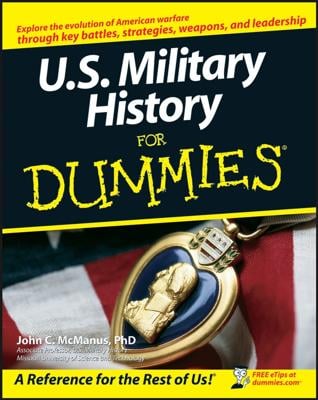Eighteenth-century royalty didn’t need much of an excuse to start a war — they fought over everything from who should be the next king of Spain to the lopping off of a sea captain’s ear. Their willingness to fight was based partly on greed for more territory and the wealth it could bring and partly on their fear that other countries would beat them to it and become more powerful.
What made these wars different from their predecessors was that they were global in scope, fought all over Europe, India, North and South America, and the Caribbean. The main combatants were the French and English, although the Spanish, Dutch, and Austrians did their share of fighting.
France and England were pretty even matches. England had a better navy, but France had a better army. In North America, England’s colonies had a much larger population: 1.5 million compared to the French colonies’ 80,000 in 1750. England’s colonies had a much more varied economy, the protection of the English navy, and the support of the Iroquois Confederacy, a six-tribe alliance of Native Americans who hated the French.
The French colonists, on the other hand, had better military leaders, did less quarreling among themselves than the English colonists, and had Native American allies of their own.
So, here’s what happened in the first three true world wars.
King William’s War
King William’s War was the warm-up bout. After a revolution by Protestants in England, James II, a Catholic, was tossed out. Protestant William III and his wife Mary were brought in from the Netherlands and put on the throne in 1689. This didn’t sit well with the French king, Louis XIV, a Catholic.
After William III sided with other countries against France in a territorial dispute, a war was on in Europe that lasted until 1697.
In America, the war went back and forth. The French led Native American raiding parties into New York and practiced a kind of warfare that was to become known as guerilla fighting: ambushes and hit-and-run attacks. The English outlasted the attacks but botched attempts to conquer Quebec and Montreal. The war pretty much ended in a draw.
Queen Anne’s War
After King William’s War ended, Europe took all of four years to catch its breath. Then in 1701, Louis XIV of France tried to put his grandson on the throne of Spain. Queen Anne, who had succeeded William in England, objected, and they were back at it again.
This time the English colonists found themselves fighting the Spanish in the South and the French in the North. As with the previous war, there were few big battles and lots of raids and counter-raids, with both sides employing Native American allies.
When the war finally ended in 1713, Louis XIV got to put his grandson on the Spanish throne, but England got Nova Scotia, Newfoundland, and the Hudson River Valley, which put it in good position to take over even more of Canada in future wars.
King George’s War
Most wars have more than one cause, but historians with a whimsical side like to start the story of King George’s War with an English smuggler named Robert Jenkins.
Spanish revenue agents caught Jenkins in 1731, and in the course of being interrogated, he involuntarily had one of his ears removed. “Take this back to the king, your master,” a Spanish official was said to have said, “whom, if he were present, I would serve in the same fashion.”
Jenkins did take his ear back to England, but he took his time about it and didn’t actually tell his tale to Parliament until 1738. It didn’t matter much, and a new war was on anyway. It eventually merged with a larger war that broke out in Europe.
In America, the same kind of fighting that had taken place in the earlier wars was taking place again. The British colonists took a key port called Louisbourg, which commanded the Gulf of St. Lawrence, but they had to give it back as part of the 1748 treaty that settled the war.

